The Austrian capital is one of the most popular cities in Europe. No wonder Vienna is beautiful. As a great lover of the history of the Habsburg monarchy, I loved Vienna for its rich history and later for its amazing galleries. If you’ve just seen the new Sissi series on TV or Netflix, you definitely need to visit at least the Hofburg. But Vienna is also ideal for trips with children. Let’s take a look at what you shouldn’t miss in Vienna.
When to go to Vienna: Weather in Vienna
When is the best time to go to Vienna in terms of weather? The weather there is about the same as here. The hottest month is usually July, when maximum temperatures reach an average of 25.6°C. On the other hand, January is the coldest month, with maximum temperatures of about 0.1°C. The best time to visit Vienna is therefore between April and October.
Personally, I would choose April, May or September to avoid too high temperatures but also the risk of being cold. But with Vienna being so close to the Czech Republic, you just have to look at the weather and go.
| Moon | Minimum temperature | Average temperature | Maximum temperature |
| January | -2°C | 0,1°C | 2,9°C |
| February | -0,9°C | 1,6°C | 5,1°C |
| March | 2,4°C | 5,7°C | 10,3°C |
| April | 5,8°C | 10°C | 15,2°C |
| May | 10,5°C | 15,2°C | 20,5°C |
| June | 13,5°C | 18,2°C | 23,4°C |
| July | 15,4°C | 20,2°C | 25,6°C |
| August | 15,3°C | 19,8°C | 25,4°C |
| September | 11,7°C | 15,3°C | 20,3°C |
| October | 7,0°C | 9,9°C | 14,2°C |
| November | 2,4°C | 4,6°C | 7,5°C |
| December | 0,5°C | 1,5°C | 4,0°C |
How to get to Vienna
How to get from the Czech Republic to Vienna? There are many options, the most convenient of which is your own car, but you must choose accommodation that has parking. And it’s usually not free. However, Vienna can also be easily reached by train and bus.
By car to Vienna
By car from Prague
If you are leaving Prague, you have three options to get to Vienna:
- Theoretically, the fastest way is on D1 through Brno. You will drive about 333 km and the journey will take you 3 hours and 35 minutes if you don’t encounter traffic jams.
- You can also turn off the D1 onto the 38 road towards Jihlava and take it through Znojmo straight to Vienna. It’s only 292 km, but the journey will take you 3 hours and 45 minutes.
- Another option is to go around České Budějovice via Třeboň. This is the longest route, 309 km can be done in about 4 hours.
By car from Brno
Again, there are three options:
- The fastest way is via Mikulov, in case of quiet roads you will be there in less than two hours.
- The next route is via Hustopeče and then Břeclav, along the D2 and A5 roads. You’ll get about 10 kilometres more mileage and sit in the car for ten minutes longer.
- If you don’t want to pay the toll, take the B46, but the journey will take about 2.5 hours.
Parking in Vienna
If you’re coming to Vienna by car, find out where you’ll be parking in advance. If you deal with it on the spot, it could cost you a lot more money. Ideal is accommodation with parking, or use P+R parking, guarded garages near public transport stops. They will also cost you much less.
List of P+R garages in Vienna:
- Erdberg (transfer to zone U3)
- Spittelau (zone U4,U6)
- Hütteldorf (U4)
- Ottakring (U3)
- Heiligenstadt (U4)
- Aderklaaer Straße (U1)
- Leopold (U1)
- Donaustadtbrucke (U2)
- Siebenhirten (U6)
- Liesing (S1)
- Perfektastraße (U6)
Map of all P+R car parks:
💡 TIP: We have prepared a detailed map with all the places and parking lots mentioned in this article. For the price of one coffee you can buy the map here.
By train to Vienna
The other option is the train. How to get to Vienna by train? From Prague hl. The station is served by direct RegioJet trains to Wien Hauptbahnhof, Vienna Central Station. The train journey takes 4.5 hours.
From Brno hl. The station is served by direct RegioJet or Vindobona trains to Vienna, a journey time of 1 hour 30 minutes.
By bus to Vienna
For example, RegioJet or FlixBus buses run to Vienna. If you want to find the best connection, use the Omio portal, where you can compare all connections.
By plane to Vienna
You can also fly to Vienna from Prague or Ostrava. Direct flights are operated by Austrian Airlines and can also be searched in the Vienna Airport app.
💡 TIP: In our article you will learn how to get cheap airline tickets .
From the airport to the city
From the airport you can easily reach the centre by taxi, bus or train. Trains and buses run at very short intervals and take you directly to the centre without stops, so you’ll be there in minutes. You can buy tickets either at the Tourist-Info stand or at the ticket machines, all of which can be found directly at the airport.
Transportation around Vienna
The best way to get around Vienna is by public transport. This will get you everywhere. If you want to use public transport, the app will be a big help. Wien mobile . It will find all the connections you need in no time, and it will also show you everything on the map so you don’t get lost.
- Underground – the underground makes it easy to get almost anywhere in Vienna. It runs from 5:00 am until midnight and has 5 lines (U1, U2, U3, U4 and U6).
- S-Bahn – the oldest public transport system in Austria. These trains run only within the capital.
- Trams and buses – Vienna is also served by the A and B bus lines, and in 1. urban district called. City Bus, which comfortably passes through all narrow streets. You can also use one of the 28 tram lines.
- Night transport – getting around Vienna is no problem even at night, there are night lines for that. The metro runs 24 hours a day on public holidays or on Fridays and Saturdays. Night bus lines are available from 0:30 to 5:00. Even the trains don’t sleep at night, arriving at their stops every 15 minutes.
Public transport tickets and where to buy them in Vienna
Public transport tickets are valid on all means of public transport, including night lines. The type of ticket you choose depends on how long you plan to visit Vienna. So you can either buy a single ticket or choose a ticket for a longer period of time: 24 hours, 48 hours, 72 hours or a week. Children up to 6 years of age ride for free and it is also good to know that during school holidays, public holidays and every Sunday, children up to 15 years of age ride for free.
Where to buy tickets for public transport? You can pay directly at the machines in the metro lobbies (where you can also pay by card), at newsagents or on the Wiener Linien website. You can also buy a single ticket with a surcharge on the tram, and you can buy a single ticket or a day ticket via SMS.
Vienna City Card – is it worth it?
TheVienna City Card is the official card of Vienna. It is very affordable and valid as a ticket for all public transport (except airport public transport). On top of that, you get 210 different discounts and benefits. You can buy it in hotels, at tourist information centres (e.g. at the airport), at the information shops of the Wiener Linen public transport system, or on the Vienna City Card app.
Our tip – Vienna City Pass – skip the sightseeing queues and save money
If you’re going to visit a lot of sights, be sure to check out whether to get Vienna City Pass . This card does not include public transport this time, but you can enjoy our popular Hop-On Hop-Off sightseeing bus tour, a guided day and night tour of Vienna and free entry to more than 60 interesting sights.
In particular, if you plan to visit in the summer months, you can skip the queues for sightseeing with this card. This card is also available at hotels, information centres, the Vienna City Card app and at Big Bus Vienna outlets.
Where to stay in Vienna
- If you’re looking for something luxurious, be sure to check out the Small Luxury Hotel Altstadt Vienna.
- For budget travellers, there is the popular JO&JOE Vienna hostel or Hotel Am Brillantengrund.
- We consider BASSENA Wien Messe Prater or Hotel Schani Wien to be the golden mean.
The most beautiful places: What to see in Vienna in 2-3 days
Vienna is a beautiful historic city full of sights that are definitely worth seeing. And what should you definitely not miss?
1) Symbol of Vienna: St. Stephen (Stephansdom)
The greatest symbol of Vienna is St. Stephen of 12. century. You don’t have to visit it on your own, just join one of the regular guided tours of the temple and catacombs. Children will not be deprived of the experience either, a special tour is also on offer for them. If you climb the 343 stairs, you will also have an amazing view of Vienna.
In addition to the view, you can admire the decoration and thoughtful details, both from the outside and from the inside. The church also houses the remains of important historical figures such as Frederick III. or Rudolf IV.
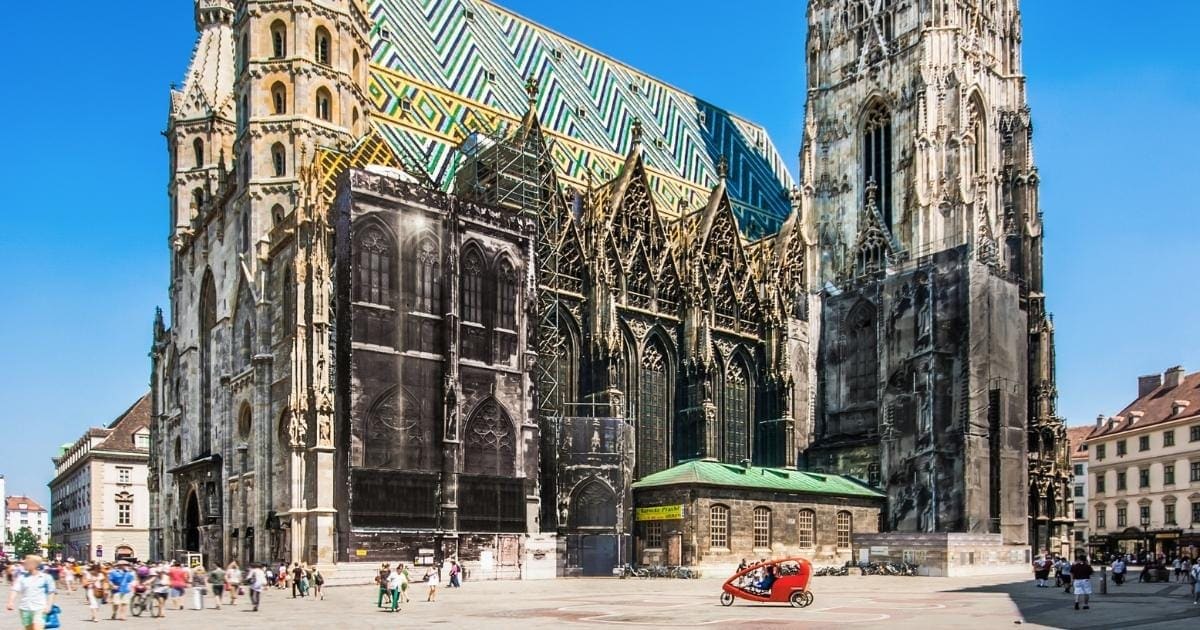
2) Belveder Castle
The Belveder Castle is worth a visit and today serves as a museum with works by world-famous artists from the Middle Ages to the present day. The castle is divided into the Upper Belvedere, where the permanent exhibition is located, and the Lower Belvedere with occasional exhibitions.
You can admire up to 420 works in the Upper Belvedere, including Gustav Klimt’s The Kiss. The chateau garden is also beautiful with the Mirror Pond, which got its name because the chateau itself is reflected on its surface.
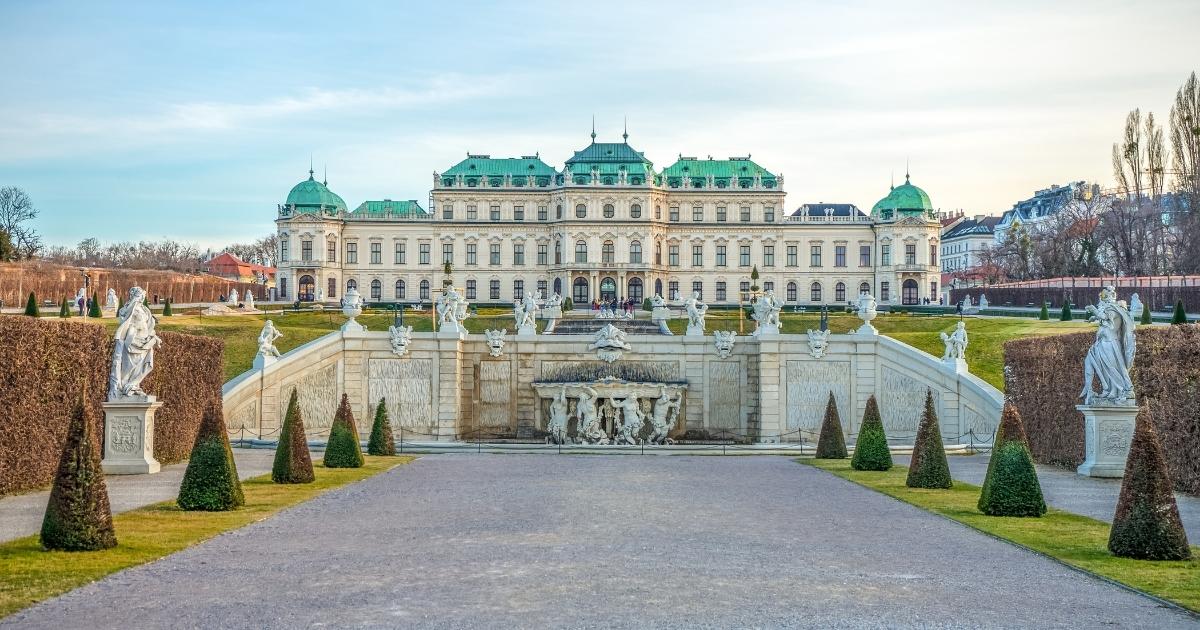
3) Central Cemetery
Although it may not seem like it at first, a walk through the Central Cemetery is truly magical. Here you can admire the tombstones of famous personalities, e.g. Beethoven, Mozart or Austrian presidents.
The cemetery is located in a park full of greenery, beautiful architecture and animals and is perfect for long walks and afternoon relaxation. And if you are really interested in the cemetery, then visit the Museum of Funerals on its premises.
4) Votive church
The votive church on the Ringstrasse is a magnificent spectacle. The church was built to thank God that the assassination of Franz Joseph I failed, hence its name. The two typical towers are worth a visit, the mosaic windows will certainly take your breath away. In addition, there is another museum with important works of art.
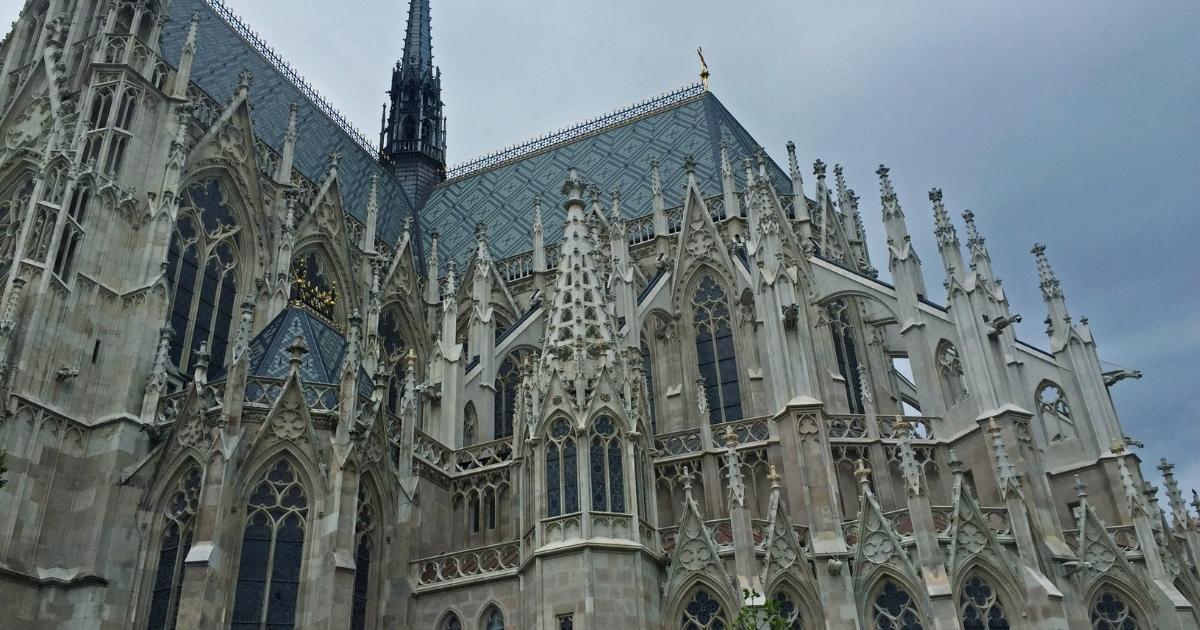
5) The largest palace complex in the world: the Hofburg
The Hofburg used to be the seat of the Habsburg Imperial Family, but today it is the official residence of the Austrian President. This palace complex comprises 17 courtyards, making it the largest building complex in the world with its 300,000m2 of floor space. Today, you can explore the imperial chambers and jewellery room, learn about the story of the Empress in the Sissi Museum, or enjoy tours of the important museums and collections.
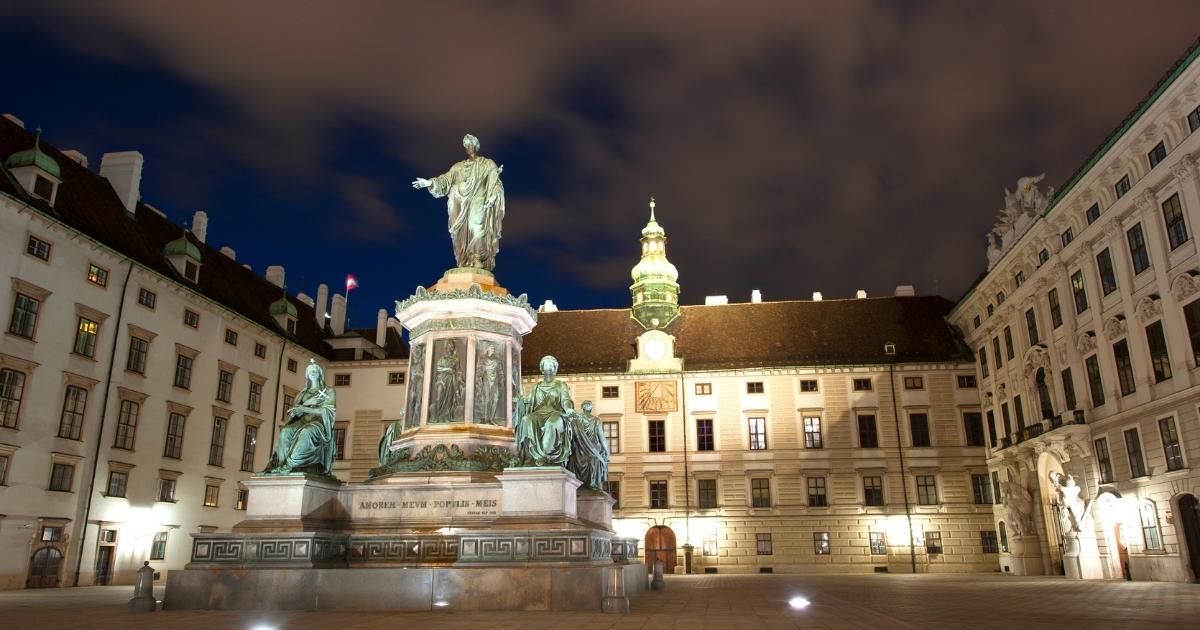
6) Habsburg summer residence: Schönbrunn
Schönbrunn used to be the summer residence of the Habsburgs, serving as home to Maria Theresa, Emperor Franz Joseph II. or Empress Sissi. Today it is a UNESCO World Heritage Site and one of Austria’s most visited monuments.
If you visit the castle, you will have the opportunity to go back in time for half an hour, thanks to digital glasses and 3D animations in viral reality. In summer, we recommend buying tickets in advance, for example via GetYourGuide, which means you don’t have to queue.
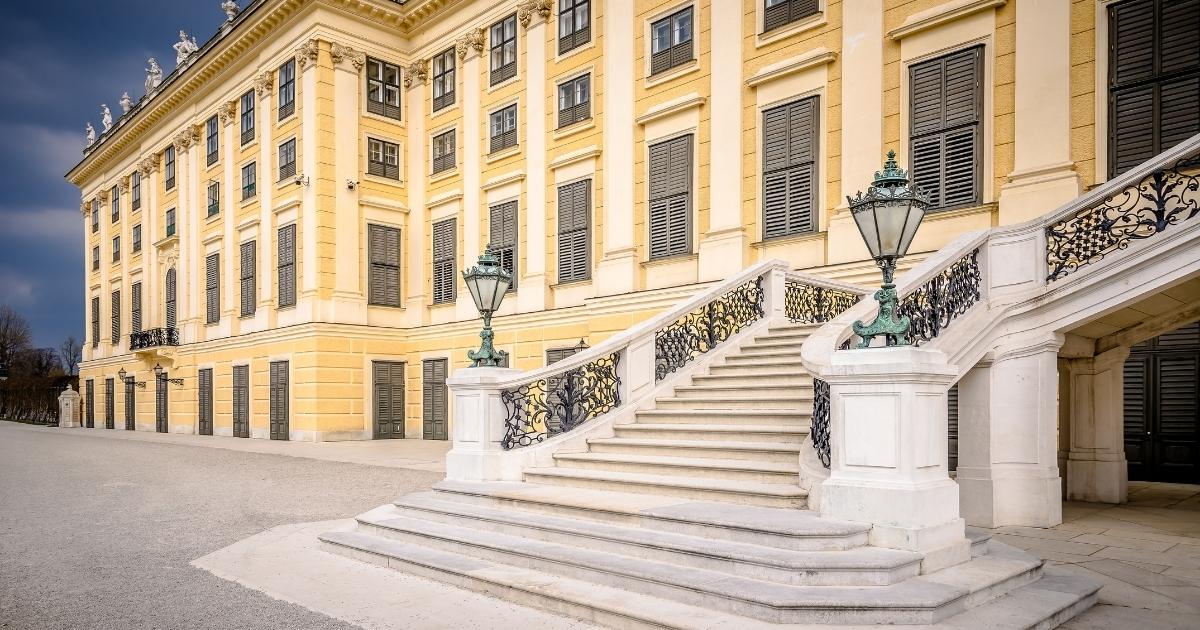
7) Art History Museum with Raffaello’s Madonna
For every art lover or admirer, it is a must to see the collection in the art history museum. Here you will find the largest collection of Brueghel paintings in the world or the Benevuto Cellini glass, which was stolen in 2003 and then recovered.
But you can also see Rubens’ Venus Celebration, Raffael’s Madonna in Green, Velázquez and his infanta Marguerite Teresa in pink and blue dresses, Rembrandt’s portraits and much more.
8) Natural History Museum – suitable for the whole family
The tour of the Natural History Museum will be interesting for the whole family. There are exhibits from different historical periods, the almost 30,000-year-old Willendorf Venus, a hall of dinosaurs, a collection of meteorites and stuffed animals belonging to extinct and endangered species.
9) Parliament Building – Austria’s most important building
One of the most important buildings in Austria is the Parliament building. It is now open to the public, or rather you can visit its Demokratikum centre. Here you will find more than 20 interactive stands on the history of Austrian democracy. Through the glass galleries you can watch the National and Federal Council meetings. You can choose from a wide range of guided tours depending on the topic you are interested in.
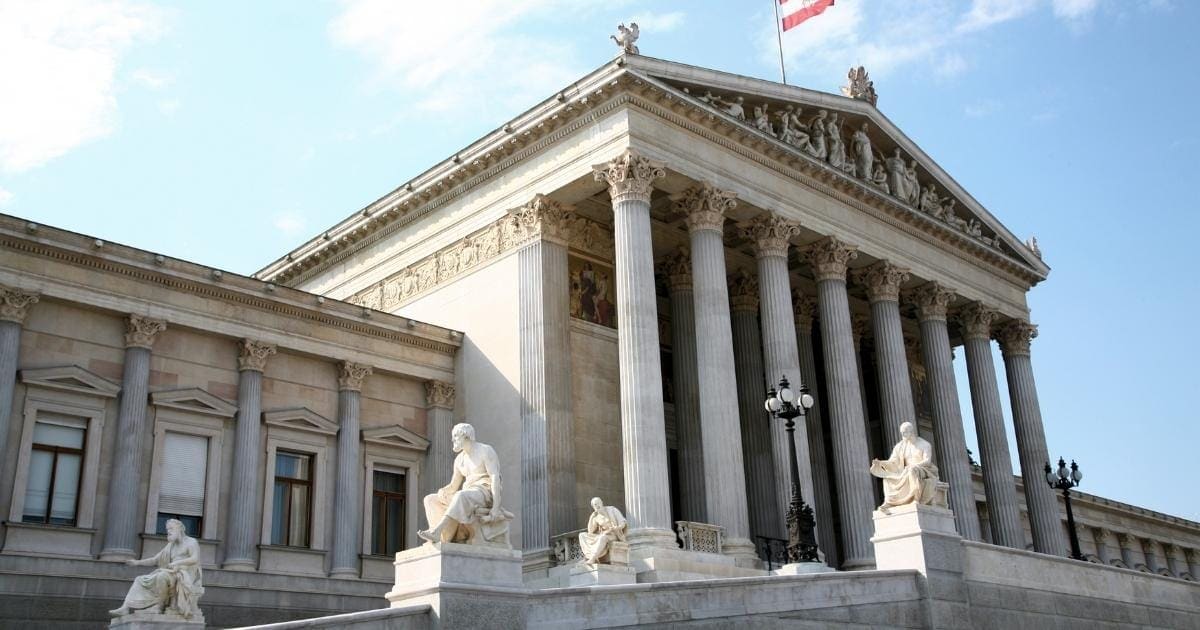
10) Vienna City Hall
An architectural gem is the Vienna Town Hall from the 19th century. century. The building is guarded by a statue called the “Iron Town Hall Man”, almost 3.5 metres high. Today, the town hall hosts various social events such as balls, film festivals and, in winter, Advent markets.
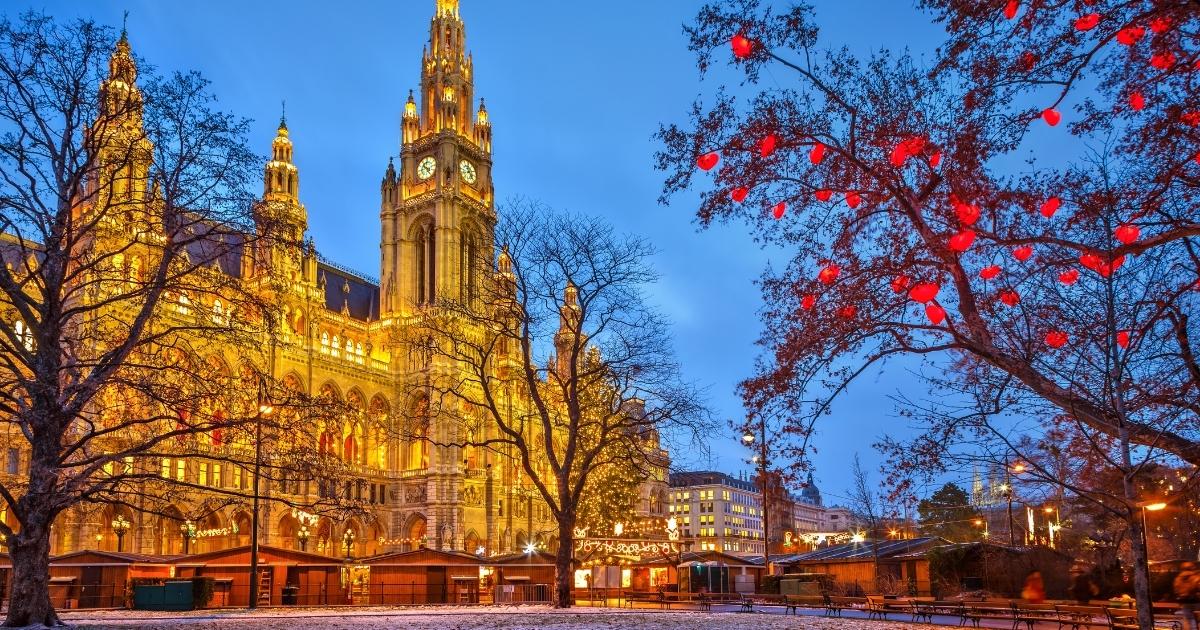
11) Art Nouveau Pavilion
The Art Nouveau building became a symbol of Art Nouveau thanks to its dome. In its time, this dome was ironically nicknamed “cabbage head”, which it has remained to this day. The architect of the building was the Czech artist Josef Maria Olbrich and he created his work for the Vienna Art Nouveau Association, which was founded by Gustav Klimt together with other artists.
12) Karlskirche Church
The church is located on Charles Square and belongs to the Roman Catholic Church. It was built in 18. century during the reign of Charles VI. Today it attracts visitors with its monumental beauty. On the ceiling of the dome, you can admire artistic frescoes thanks to the panoramic lift.
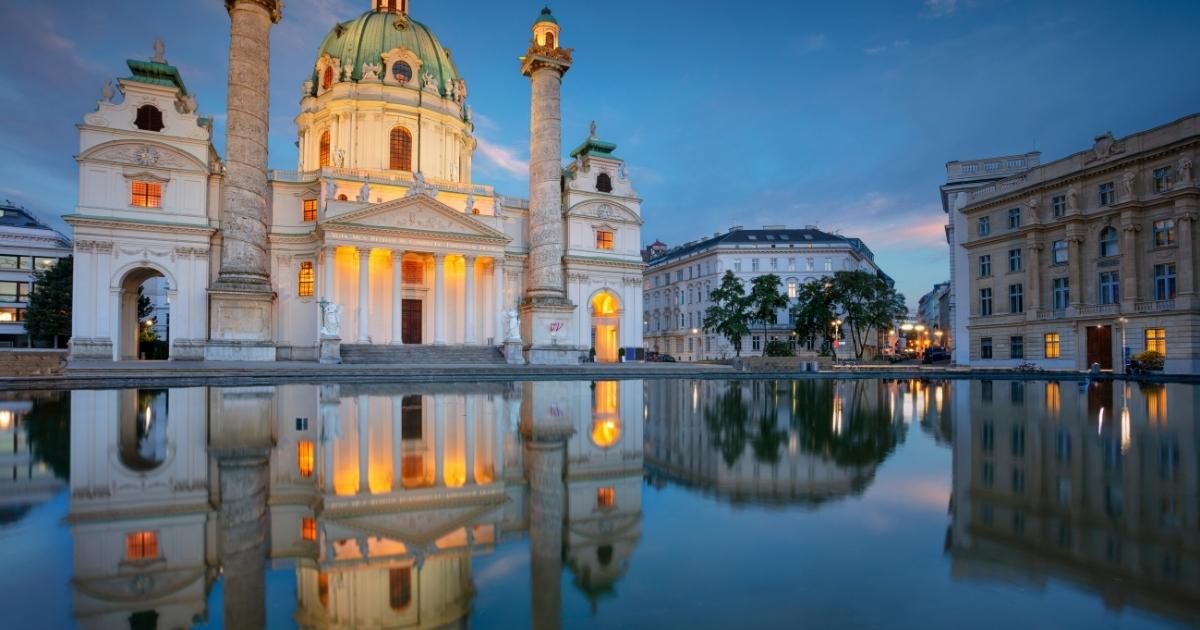
13) National Theatre of Vienna Burgtheater
The Burgtheater, Vienna’s national theatre, was the wish of Maria Theresa and was built in 1741. The premieres were held here, for example. Mozart’s operas or Beethoven’s Symphonies. V 19. century, the theatre was moved to a new building designed by Gottfried Semper and Karl von Hasenhauer.
14) Gasometer
Although it may not seem so at first glance, the gasometers of Vienna are of great historical interest. The four original gas houses are now used for housing and commercial services, so the average visitor cannot get inside. Still, this monument is worth a visit at least from the outside.
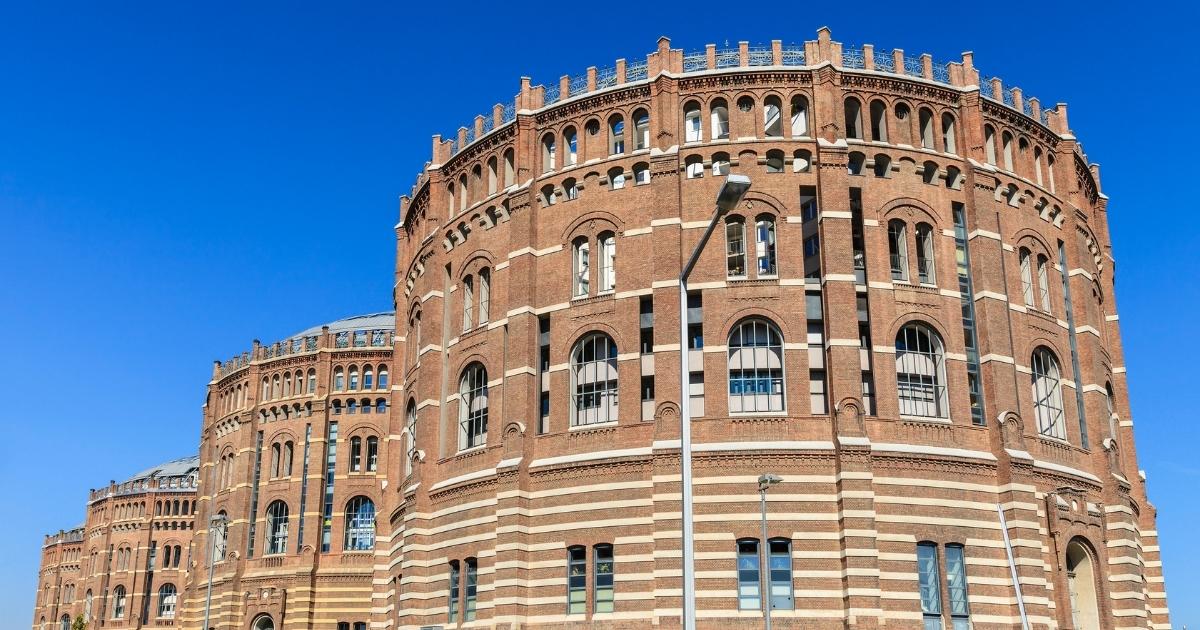
15) Church of St. Leopold at Steinhof
Church of St. Leopold’s church is, in the true sense of the word, more of a house of prayer. It stands in the middle of the grounds of a psychiatric hospital in the Penzing district. It is dedicated to the patron saint of Austria, Saint Leopold. The entire work, whether the architecture itself or its decoration, was created by members of the Vienna Art Nouveau Association.
16) Ringstrasse
Many of the sights mentioned above are located on the Ringstrasse. It is a 5.3 kilometre long track along which stand important monumental buildings. This trail was built by the Austrian Emperor Franz Joseph in 1857. In addition to private palaces, you will also find:
- State Opera
- Parliament building
- Town Hall
- National Theatre Burgtheater
- University of Vienna
- Museum of Applied Arts, Art History Museum and Natural History Museum
- Votive temple
17) State Opera
Whether you go to a subtitled opera or just take a guided tour of the building, you shouldn’t miss a visit to this landmark.

18) Church of St. Francis of Assisi
The Art Nouveau building on the Mexikoplatz was completed at the beginning of the 20th century. century.
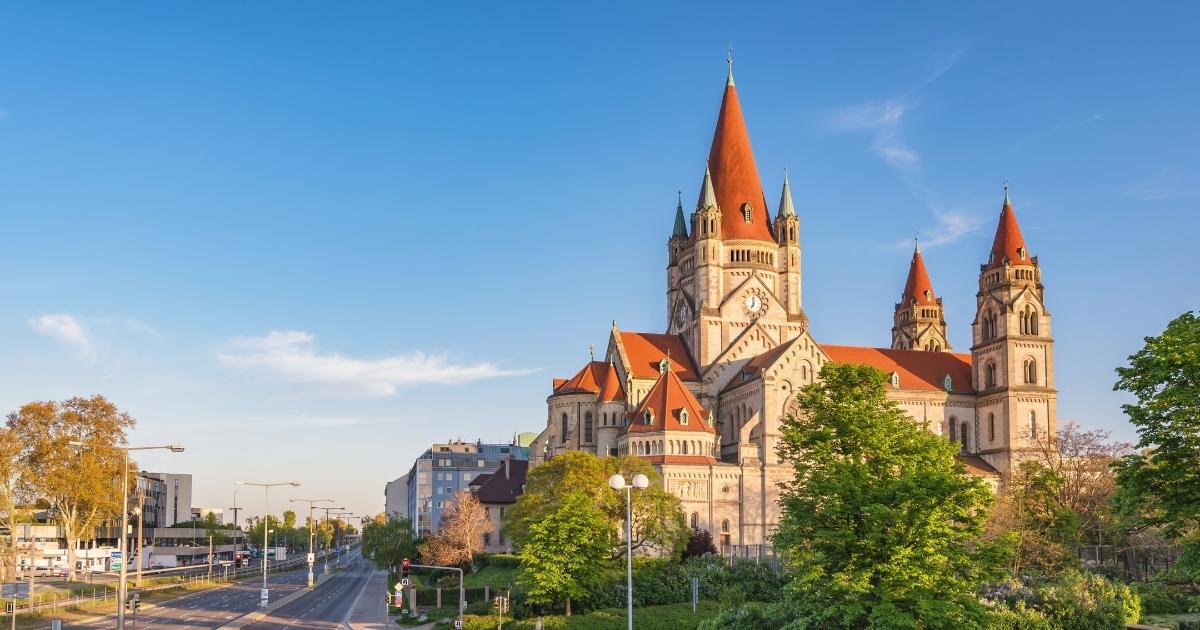
19) Temple of Theseus
The Temple of Theseus in the Volksgarten is a replica of the Temple of Hephaestus in Athens. Here you can see Thése’s statue of the famous artist Antonio Canova.
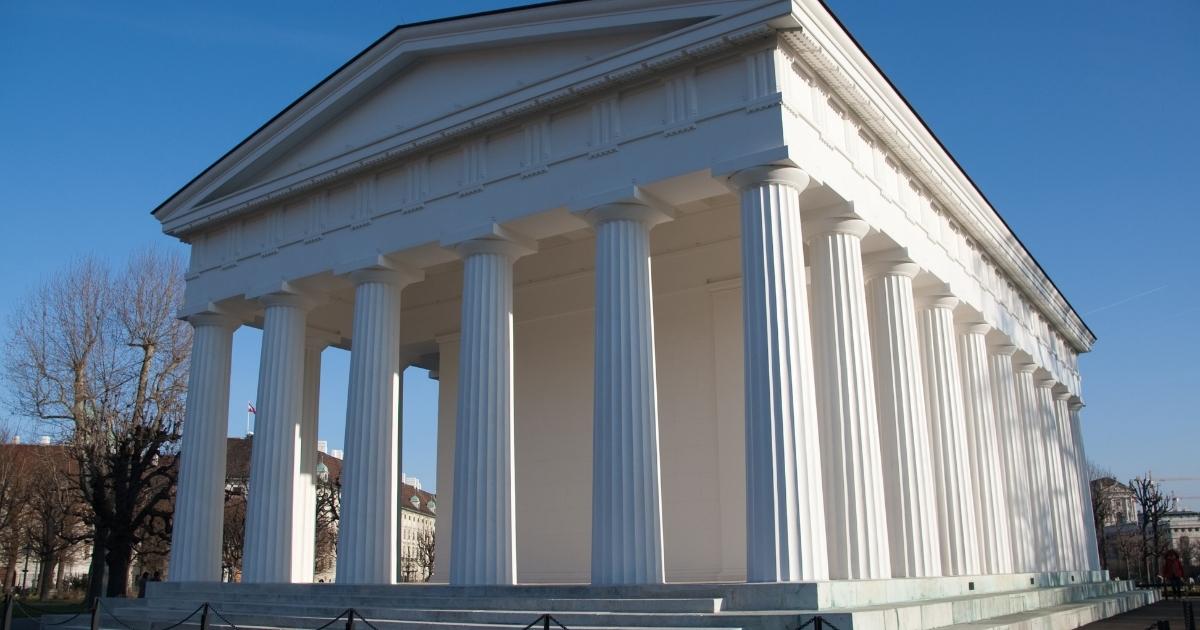
20) Hundertwasserhaus
If you love Gaudí, you must visit the Hundertwasserhaus. This building in Vienna is one of the most famous works of the architect, painter and sculptor Friedensreich Hundertwasser, unfortunately this building can only be admired from the outside.
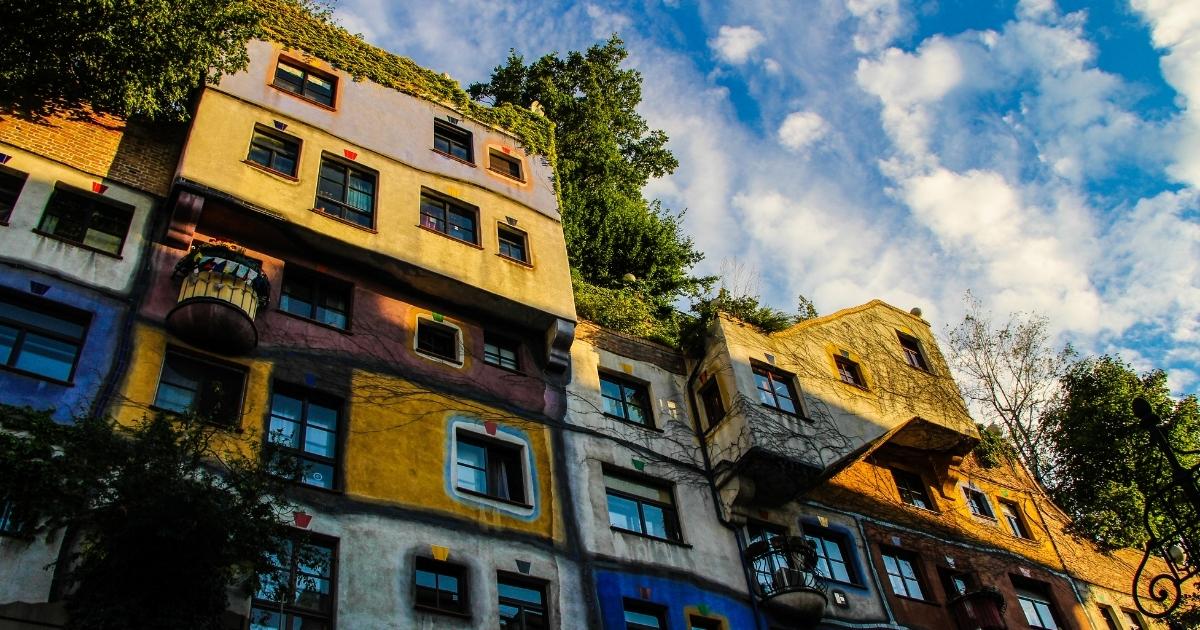
21) Madame Tussauds
If you go to enjoy the giant wheel in Prater, don’t forget to visit the wax museum in the park. It is a world-famous museum with more than 70 mannequins of famous personalities.
22) Haas-House
Architecturally very interesting postmodern building in the city centre. Today, the inside houses restaurants, shops and more.
Viewpoints in Vienna – the best sunrise and sunset spots
If you love sightseeing or are looking for the perfect sunset spot, you should visit:
23) Giant Eye Prater – a huge theme park in the centre
This symbol of Vienna is 65 metres high, weighs 430 tonnes and rotates at a speed of 2.7 km/h, so you can enjoy the view not only of the park but also of beautiful Vienna at its top. The bicycle was built in 1897 and is the oldest surviving Russian bicycle in the world. You’ll find it in the Prater, a huge theme park in the city centre.
24) Donauturm
The best view is from the Donauturm tower. Overall, it rises to a height of 252 metres, but the observation deck is slightly lower, at 155 metres. If you are already counting down the stairs in your mind with dread, there is no need. Two lifts take you up to the tower in just 35 seconds.
25) Gloriette in the gardens of Schönbrunn
The Gloriette can be found in the gardens of Schönbrunn on the hill, where there is also a café. In the café, you can sample traditional Viennese cuisine while watching the sunset.
What to do in Vienna when it rains
Fortunately, there are plenty of sights to visit in Vienna when it rains. If you’ve already gone through everything we’ve mentioned above, don’t despair. There is much more:
26) Kunsthistorisches Museum
The Kunsthistorisches Museum is one of the most impressive art museums in the world, housing many art treasures acquired by the Habsburgs. Highlights include the world’s largest collection of Bruegel and works by a number of masters, including Canaletto, van Dyck and Rubens.
The building is as distinctive as the artworks it houses. Granite, marble and stucco interior, interspersed with with murals by Gustav Klimt and Hans Makart, distills the best of 19th century Austro-Hungarian design. century.
27) Jewish Museum
The oldest Jewish museum in the world was founded in Vienna in 1895, but was closed and looted by the Nazis in 1938. It was reopened 50 years later and now occupies two locations – on Dorotheergasse and Judenplatz.
28) Beethoven Museum
The Beethoven Museum is located in the building where the world-famous composer wrote his letter “Heiligenstadt Testament”, in which he lamented his hearing loss and failing health. Beethoven increasingly relied on letters and notes as his deafness worsened, meaning that much of his personal life and work is documented in extraordinary detail. The most curious object in the exhibition is a lock of his hair, which helped reveal the probable cause of his death in 2007.
29) Albertina – from Leonardo Da Vinci to Oskar Kokoschka
The Albertina offers one of the world’s finest collections of art, and one of the highlights of the Albertina is Albrecht Dürer’s sketch of a hare, which is so fragile that the original is only exhibited once every ten years. Be sure to check out the current exhibitions.
30) Sigmund Freud Museum
Sigmund Freud lived at 19 Berggasse for 47 years before fleeing to London to escape the Nazis. The site is now a carefully curated museum where a range of personal objects, archival footage and letters tell the story of the founder of psychoanalysis.
31) Empress Sissi Museum
If you’ve been watching the new Sissi series on Netflix or TV, or if you’re a big Habsburg lover like me, you can’t miss this museum. The museum offers a fascinating glimpse into her life through an array of personal objects, poems, portraits, wooden exercise equipment, her death mask and more.
32) Demel Café and Chocolate Factory
Empress Sissi is said to have ordered sweets from this café. If you want to have the ultimate Vienna experience, this is the place to be. While drinking coffee and tasting desserts, you can watch through the glass into the kitchen as the desserts are made.
33) Wine tasting
Don’t you like museums and have you been to a chocolate factory? How about a wine tasting?
34) Taste regional beers
If you’re not a wine drinker, it’s okay, you can also go for a tasting of regional beers. For example, head to AmmutsØn Craft Beer Dive, where they have up to 12 local beers. Beaver Brewing Company, Mel’s Craft Beer and Diner and Fassldippler are also very popular.
Map with points of interest on your phone
Save a map of the best places in Vienna directly to your phone. After purchase, you will receive a link to a non-public Google Map that you can open or print at any time on your phone. All of them are clearly marked on the map:
- Hotels mentioned
- The mentioned monuments
- The aforementioned museum
- The aforementioned P+R car parks
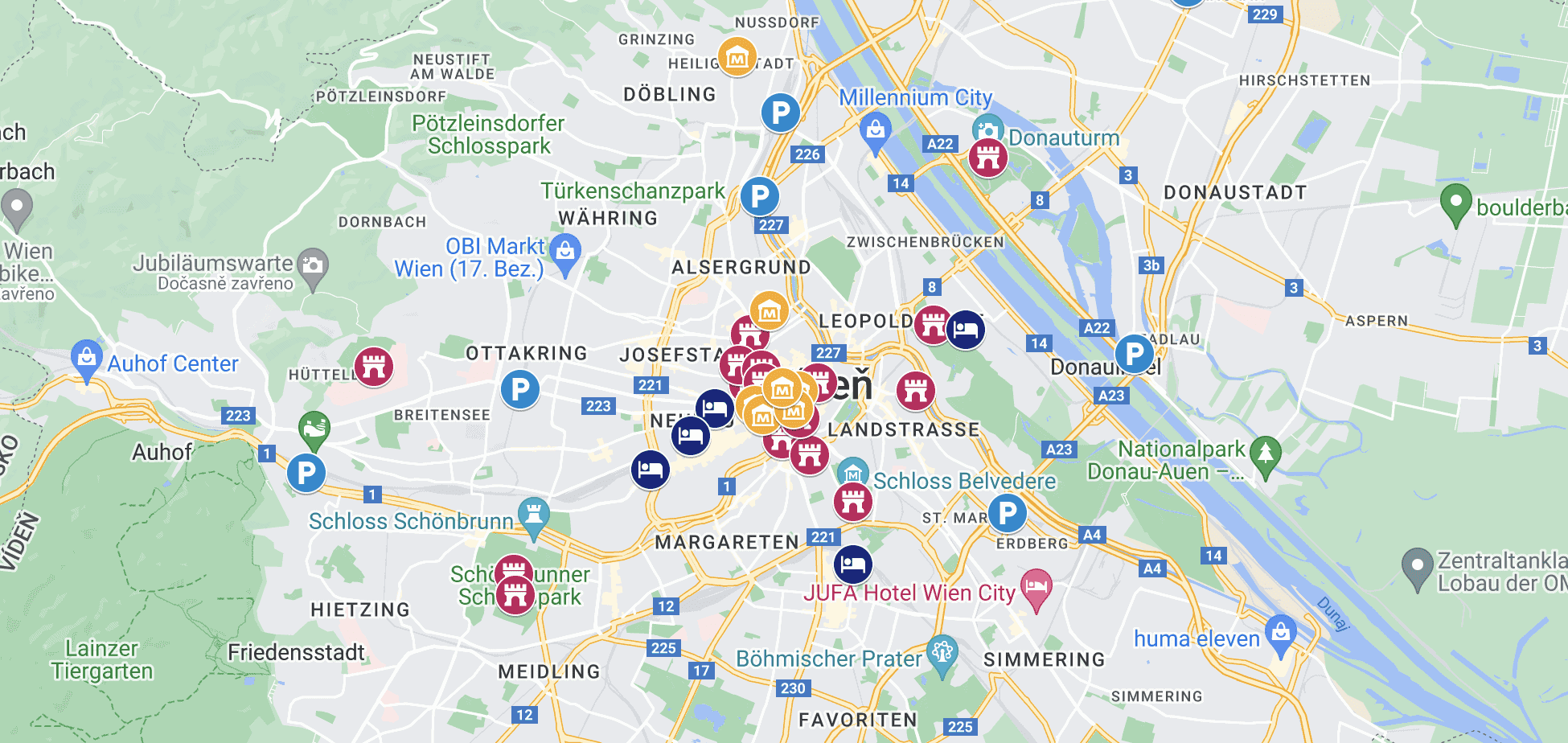
Romantic cruises on the Danube
If you love cruises, you can also take a romantic cruise on the Danube in Vienna.
35) Danube cruise with 3-course dinner
Via GetYourGuide you can go on a boat cruise on the Danube with a three-course menu. Small children are free and the cruise takes about 3 hours.
What to see in Vienna in one day: top 5 sights
From the Czech Republic you can take a day trip to Vienna. In this case, you will not have time to visit all the important sights. So here is a list of the most interesting, or TOP 5 sights to see if you are in Vienna for just one day:
- Cathedral of St. Stephen
- Hofburg
- Town Hall
- Schonbrunn
- Natural History Museum.
Christmas markets in Vienna
One very common reason to visit Vienna is the Christmas markets. They are usually held from mid-November to Christmas, some of them extend into January.
Vienna’s Christmas Dream Rathausplatz offers many attractions for children and adults alike. These include not only a carousel and reindeer train, but also a Christmas ice dream – an ice track through the park on which you can skate.
Christmas Village on Maria-Theresien-Platz offers up to 70 different stalls with traditional products and culinary delights.
Another Christmas village is located in campus of the University of Vienna which is why it’s mostly students who visit every year. But apart from them, families with children will also find something to do there. They can ride a train or a carousel.
The Christmas market in Freyung Square is certainly worth mentioning ; it’s a good dose of Christmas tradition, and not just because of the large Christmas egg in the middle of the square. The first markets were held here as early as 18. century and the stalls feature traditional cribs, ceramics and other products.
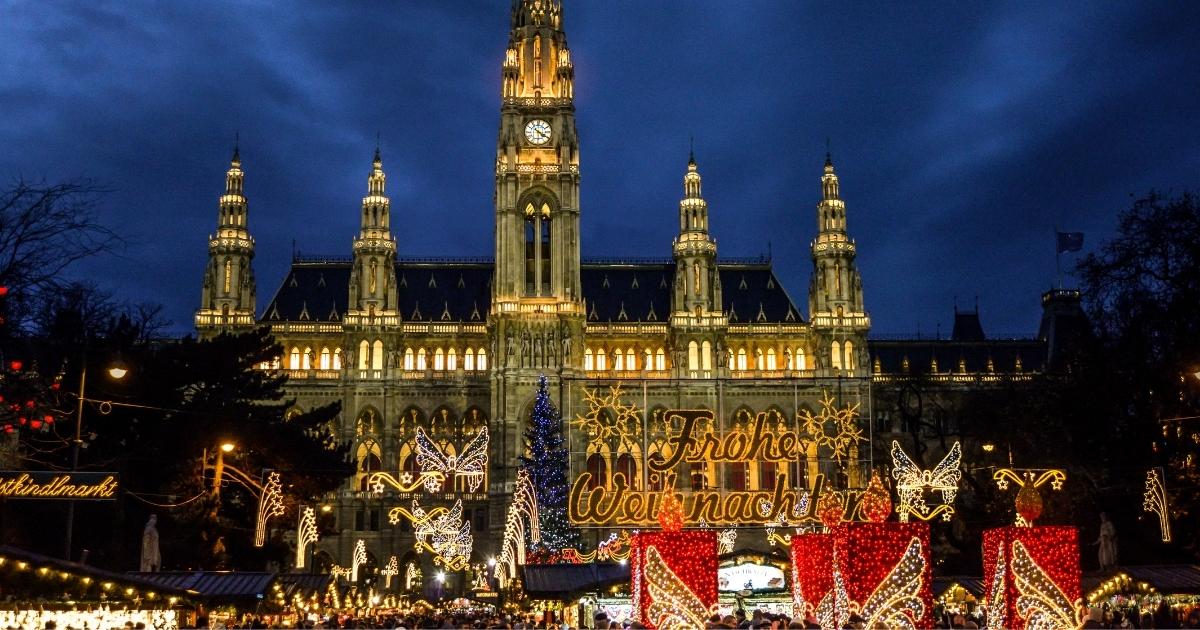
Castle Christmas Market
Christmas markets are also held in front of Vienna’s castles:
- Christmas and New Year’s markets before Schonbrunn Palace
- Christmas village in front of Belvedere Castle
- Christmas markets before Liechtenstein Castle
Art Christmas Market
At the art Christmas markets you will find lots of arts and crafts, but also an exhibition of artworks or demonstration workshops. Such markets are held at Charles Square or in Spittelberg.
Other interesting Christmas markets
- On the square Am Hof
- Christmas Village on Maria-Theresien-Platz
- Christmas Village on Stephansplatz Square
- Advent Market C. and K. in front of the Hofburg Castle
- Markets in front of the State Opera House
- Almadvent on Messeplatz
- The magic of Christmas in the courtyard of the Ottakringer Brewery
- Experience markets at the giant Ferris wheel under the motto “Prater Rocks”
What to visit in Vienna with children
The children mostly love Pratr, they like the local zoo and enjoy visiting the Natural History Museum. Be sure to take the Hop on Hop off buses with the kids so they don’t get tired on the long marches and visit the aforementioned Demel Chocolate Factory, where you can sample treats that the Empress herself used to eat.
Tips and Tricks for Your Vacation
Don’t Overpay for Flights
Search for flights on Kayak. It’s our favorite search engine because it scans the websites of all airlines and always finds the cheapest connection.
Book Your Accommodation Smartly
The best experiences we’ve had when looking for accommodation (from Alaska to Morocco) are with Booking.com, where hotels, apartments, and entire houses are usually the cheapest and most widely available.
Don’t Forget Travel Insurance
Good travel insurance will protect you against illness, accidents, theft, or flight cancellations. We’ve had a few hospital visits abroad, so we know how important it is to have proper insurance arranged.
Where we insure ourselves: SafetyWing (best for everyone) and TrueTraveller (for extra-long trips).
Why don’t we recommend any Czech insurance company? Because they have too many restrictions. They set limits on the number of days abroad, travel insurance via a credit card often requires you to pay medical expenses only with that card, and they frequently limit the number of returns to the Czech Republic.
Find the Best Experiences
Get Your Guide is a huge online marketplace where you can book guided walks, trips, skip-the-line tickets, tours, and much more. We always find some extra fun there!
